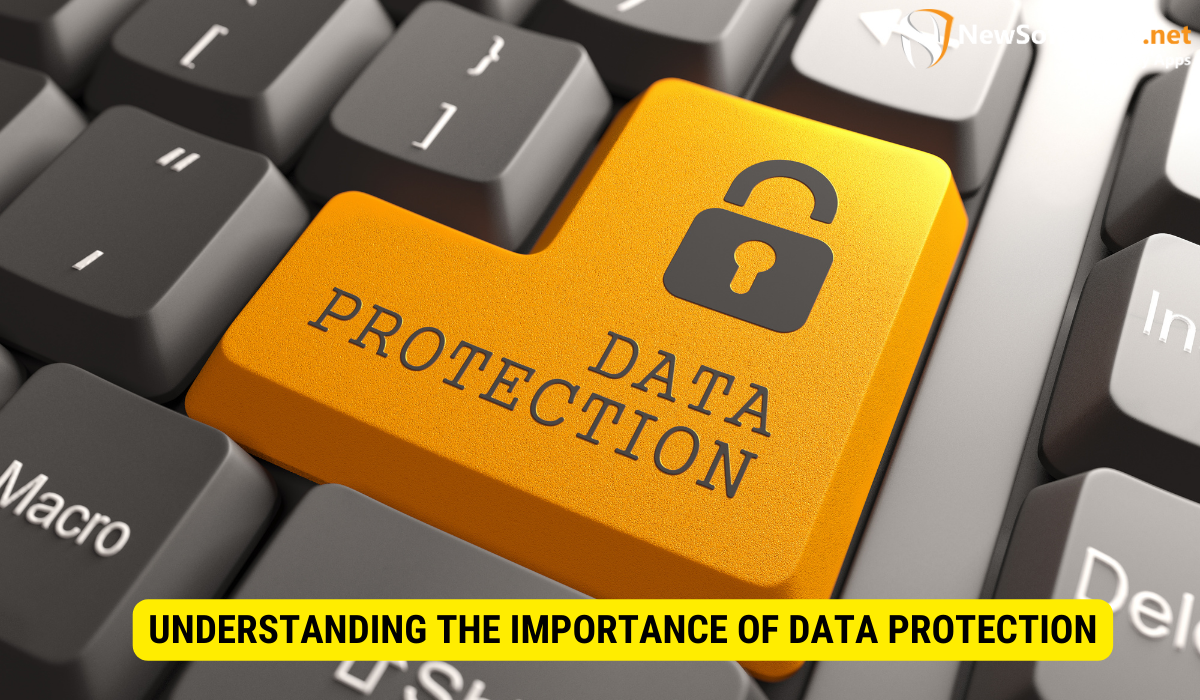In today’s digital age, data protection is of utmost importance. Organizations and individuals alike need secure and reliable solutions to protect their valuable data. Nextcloud is a powerful open-source platform that provides just that – a secure directory setup for enhanced data protection. Together, we will explore the importance of data protection, the role of Nextcloud in achieving it, and the steps to install and optimize Nextcloud for maximum security.
Understanding the Importance of Data Protection

Data is the lifeblood of modern businesses. From sensitive customer information to confidential business strategies, organizations have a lot at stake when it comes to data protection. The consequences of a data breach can be devastating, including financial losses, reputational damage, and legal complications. Hence, implementing robust data protection measures is essential in today’s threat landscape.
In today’s digital age, where technology is constantly evolving, the need for data protection has become more critical than ever. Cybercriminals are constantly finding new ways to exploit vulnerabilities and gain unauthorized access to sensitive information. Organizations must stay one step ahead by implementing comprehensive data protection solutions.
Nextcloud is a comprehensive solution that enables organizations to regain control over their data. By offering a secure directory setup, Nextcloud ensures that data remains protected from unauthorized access, accidental deletions, and other potential threats.
The Role of Nextcloud in Data Protection
Nextcloud serves as a secure platform for storing, syncing, and sharing files. It offers robust encryption mechanisms to safeguard data at rest and in transit. This means that even if a hacker manages to intercept the data during transmission or gain access to the server, the information will remain encrypted and unusable.
Additionally, Nextcloud provides granular access controls, allowing administrators to define permissions for individual users or groups. This ensures that only authorized personnel can access sensitive data, reducing the risk of data leaks and unauthorized disclosures.
Furthermore, Nextcloud offers advanced features such as versioning, file recovery, and activity tracking, enabling organizations to maintain data integrity and traceability. These features are particularly valuable in scenarios where data needs to comply with regulatory requirements, such as GDPR and HIPAA.
With Nextcloud, organizations can have peace of mind knowing that their data is protected at every level. From encryption to access controls and advanced features, Nextcloud provides a comprehensive data protection solution.
Why Choose a Secure Directory Setup?
A secure directory setup adds an additional layer of protection to Nextcloud. By configuring proper directory permissions, organizations can prevent unauthorized access to sensitive files and directories. This setup ensures that even if an attacker gains access to the Nextcloud server, they will be unable to compromise critical data due to restricted permissions.
Implementing a secure directory setup is crucial for organizations dealing with highly sensitive information, such as financial institutions, healthcare providers, and government agencies. It provides peace of mind knowing that data is protected not only within Nextcloud but also at the filesystem level.
Moreover, a secure directory setup enhances data governance and compliance efforts. By implementing proper access controls and permissions, organizations can demonstrate compliance with regulatory requirements and industry standards. This not only helps in avoiding hefty fines and legal complications but also builds trust among customers and stakeholders.
Furthermore, a secure directory setup enables organizations to have better control over data sharing. By defining permissions at the directory level, organizations can ensure that only authorized individuals or teams have access to specific files or folders. This helps in preventing accidental data leaks and ensures that data is shared securely within the organization.
In conclusion, a secure directory setup is a crucial component of a comprehensive data protection strategy. It adds an extra layer of security to Nextcloud, ensuring that sensitive data remains protected from unauthorized access and potential breaches. By implementing proper access controls and permissions, organizations can enhance data governance, comply with regulatory requirements, and build trust among customers and stakeholders.
Preliminary Steps Before Installation
Before diving into the installation process, it is essential to ensure that your system meets the necessary requirements and that your server is properly prepared.
System Requirements for Nextcloud
Nextcloud can be installed on various server platforms, including Linux, Windows, and macOS. However, it is recommended to choose a reliable Linux distribution, such as Ubuntu or CentOS, for optimal performance and security.
Make sure your server meets the minimum system requirements, such as sufficient storage space, RAM, and CPU power. Additionally, ensure that your server has a stable internet connection to enable continuous syncing and remote access.
Preparing Your Server for Installation
Prior to installing Nextcloud, it is crucial to set up a secure server environment. This includes installing necessary software dependencies, such as Apache or Nginx as the web server, PHP, and a database server like MySQL or MariaDB.
Furthermore, configure the firewall settings to allow incoming traffic to the web server only through secure protocols (e.g., HTTPS). This will protect your Nextcloud instance from potential attacks, such as cross-site scripting and SQL injection.
Additionally, enable necessary security features, such as SSL/TLS encryption, to ensure secure communications between the server and clients.
Step-by-Step Guide to Installing Nextcloud
Now that your server is prepared, it’s time to install Nextcloud and start benefiting from its secure directory setup. Follow these steps:
Downloading and Extracting Nextcloud
Visit the official Nextcloud website and download the latest stable release. Once downloaded, extract the archive to a directory accessible by the web server.
Ensure that the extracted files have proper ownership and permissions, allowing the web server to read and modify them while restricting access to other users.
Configuring the Web Server
Next, configure your web server to serve Nextcloud. Create a virtual host configuration file and specify the necessary settings, such as the domain name, document root, and SSL certificate.
Make sure to enable the necessary modules, such as mod_rewrite, to ensure clean URLs and better security.
Setting up the Database
Nextcloud requires a database to store user accounts, file metadata, and other configuration data. Set up a new database and user with appropriate privileges.
During the Nextcloud installation process, you will be prompted to provide the database credentials and connection details. Make sure to enter them correctly to establish a successful connection.
Implementing a Secure Directory Setup
With Nextcloud successfully installed, it’s time to implement a secure directory setup to further enhance data protection.
Understanding Directory Permissions
Nextcloud relies on proper directory permissions to regulate access to files and directories. Each file or directory has three sets of permissions – read, write, and execute – which can be assigned to three different user groups – owner, group, and others.
Understanding the concept of least privilege is crucial when setting directory permissions. Assign only the necessary permissions to each user group, ensuring that sensitive files and directories are accessible only to authorized users.
Configuring Secure Directory Permissions
Based on your organization’s security requirements, configure directory permissions to restrict access to sensitive files and directories. Ensure that user accounts associated with Nextcloud have read and write permissions only to directories that need modification.
Make use of tools like access control lists (ACLs) to provide fine-grained control over user access. Regularly audit directory permissions to identify any potential misconfigurations or unauthorized access attempts.
Optimizing Nextcloud for Enhanced Security

Nextcloud provides additional security features that can be enabled to further enhance the protection of your data.
Enabling Server-Side Encryption
Server-side encryption adds an extra layer of protection to your data by encrypting it before storage. This ensures that even if the physical storage media is compromised, the data remains unreadable without the encryption key.
Nextcloud offers various encryption options, including the default encryption module and external encryption methods. Choose the one that best aligns with your security requirements and enable server-side encryption to safeguard sensitive data.
Implementing Two-Factor Authentication
Two-factor authentication (2FA) is a powerful security measure that adds an additional layer of protection to user accounts. By requiring users to provide an additional verification factor, such as a one-time password generated by an authentication app, Nextcloud can prevent unauthorized access even if the account credentials are compromised.
Enable 2FA for user accounts within Nextcloud to strengthen the overall security posture of your installation.
Key Takeaways
- Data protection is crucial in today’s digital landscape, with Nextcloud serving as a secure directory setup platform.
- Nextcloud provides granular access controls, encryption, and features like versioning to safeguard data.
- A secure directory setup adds an additional layer of protection by configuring proper directory permissions.
- Preparing your server and following a step-by-step installation guide is essential for successful Nextcloud implementation.
- Optimizing Nextcloud with server-side encryption and two-factor authentication adds extra security measures.
Frequently Asked Questions (FAQs)
Can Nextcloud be installed on Windows?
Yes, Nextcloud can be installed on Windows. However, it is recommended to use a reliable Linux distribution for better performance and security.
What are the advantages of implementing a secure directory setup?
A secure directory setup restricts access to sensitive files and directories, adding an extra layer of protection even if the Nextcloud server is compromised.
How does server-side encryption work in Nextcloud?
Server-side encryption encrypts data before it is stored, ensuring that even if the physical storage media is compromised, the data remains unreadable without the encryption key.
What is two-factor authentication (2FA) and why is it important?
Two-factor authentication adds an extra layer of security by requiring users to provide an additional verification factor, such as a one-time password, in addition to their account credentials. It helps prevent unauthorized access even if the credentials are compromised.
Is Nextcloud suitable for organizations with strict compliance requirements?
Yes, Nextcloud offers features like encryption, versioning, and activity tracking that are valuable for organizations with strict compliance requirements. It is important to set up Nextcloud in compliance with relevant regulations and best practices.
Conclusion
Installing Nextcloud provides organizations with a secure directory setup for enhanced data protection. By understanding the importance of data protection, the role of Nextcloud, and the benefits of a secure directory setup, organizations can establish robust data security measures.
Following the step-by-step installation guide and optimizing Nextcloud for enhanced security through features like server-side encryption and two-factor authentication ensures that valuable data remains protected from unauthorized access and potential data breaches.
With Nextcloud, organizations can unlock the power of secure data management and regain control over their critical information.
